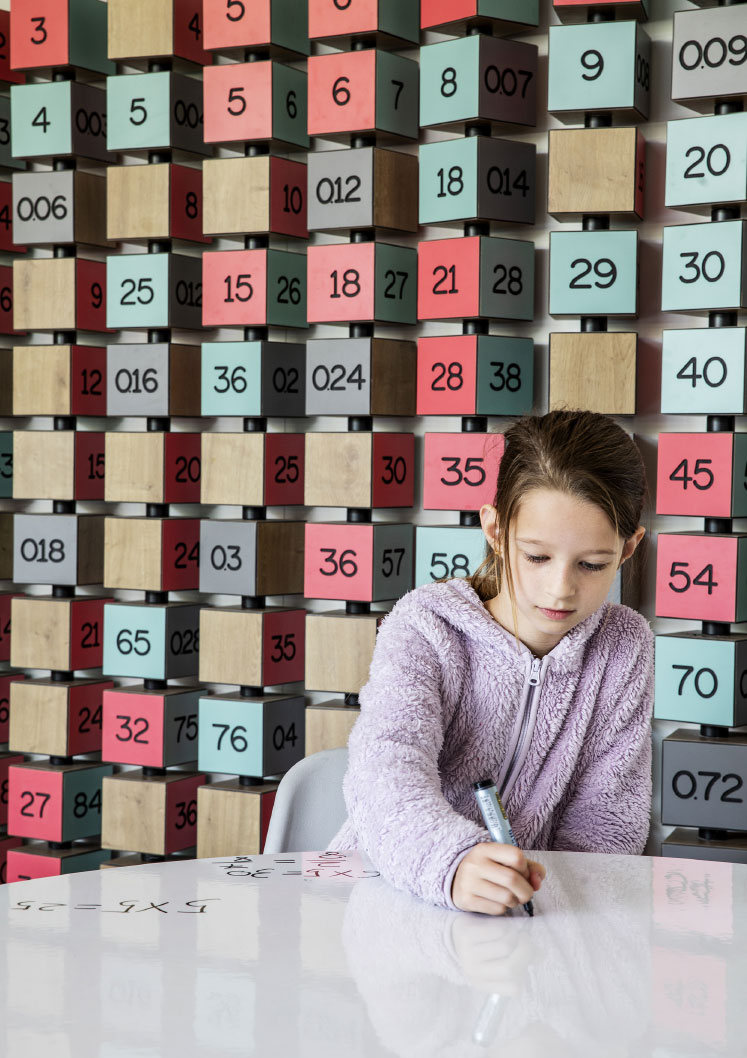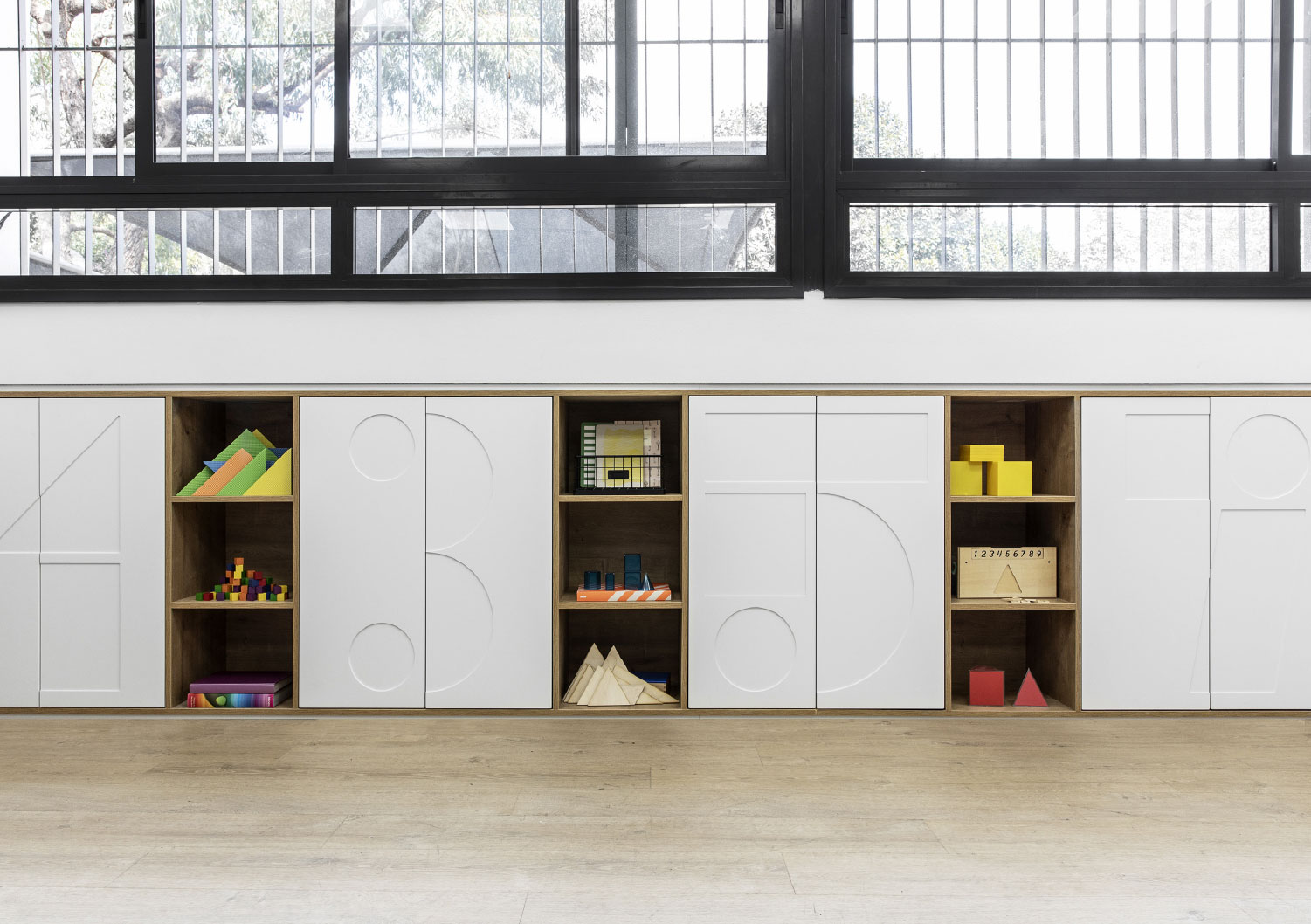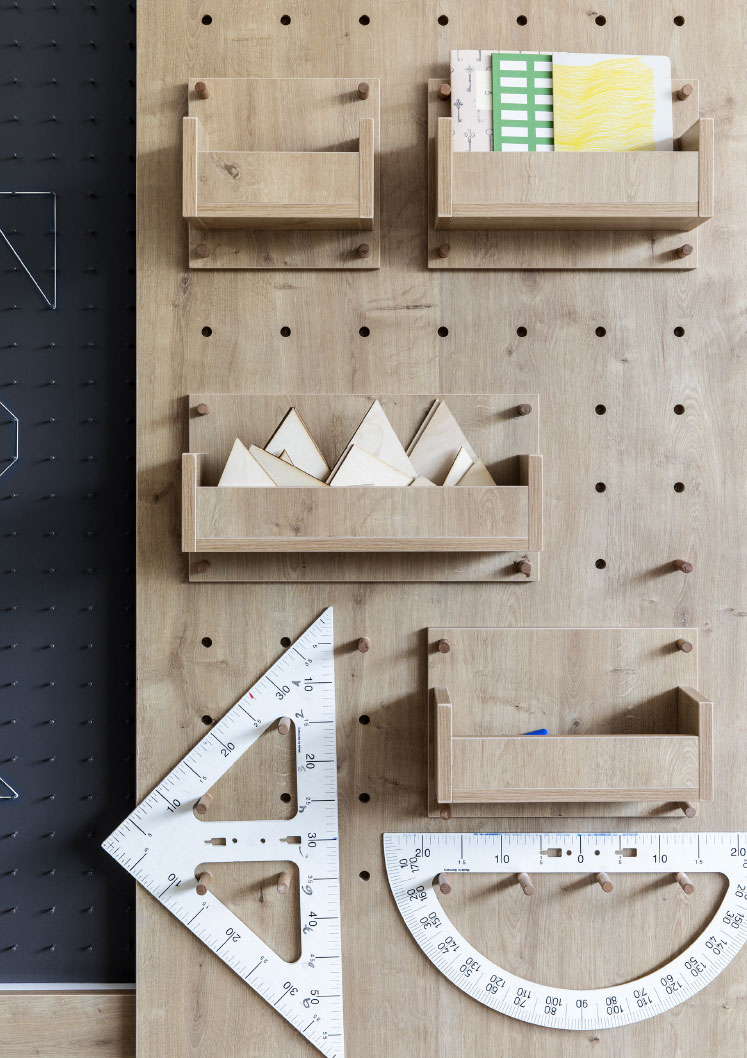Different Math Classroom for grades 4-6
Different Math Classroom for grades 4-6
Ben Gurion School // Mathematics Classroom
For years, math was seen as a functional subject, based mainly on memorization and practice. At Ben Gurion School, they wanted to challenge this perception, and create for a space for grades 4-6 that would allow a different method of study, based on experiential learning and play.
As with every project in which I am involved, discussions were held with the pedagogical team in order to understand the needs and research was done on methods for learning math and the various learning aids that are commonly used. The design concept was formulated through the discussions and research.
The design challenge was to plan a standard classroom (50 square meters) that would allow for functionality, and also experiential learning, without compromising on the design aspect.
The classroom was designed as a dynamic structure that encourages the children’s active participation. A variety of activity areas based on different styles of learning, and a variety of tables were integrated in the space, such as whiteboard tables, and a large worktable for both individual and group learning. The purpose of this is for each child to able to experiment with different study methods and find the one that suits him. In addition, we took traditional learning aids from “out of the closet” and translated them into visual-play elements that were also integrated in the space, out of an understanding that study aids encourage the children to active play, and that combining play into the learning process contributes to their motivation and enjoyment and makes learning more in-depth, enjoyable, and challenging. For example, the classroom has a cube board made up of three math boards (a multiplication board, a decimal board, and a hundreds board) and an empty board, so that the students can perform tasks and experientially explore the boards.
A neutral color palette (white and wood) was chosen for this project, with touches of color and a richness of shapes, to give room for the many colorful learning aids that are an essential part of the classroom teaching method. The project was carried out in collaboration with Architect Chen Steinberg Navon.
Photo: Itai Banit






Ben Gurion School // Mathematics Classroom
For years, math was seen as a functional subject, based mainly on memorization and practice. At Ben Gurion School, they wanted to challenge this perception, and create for a space for grades 4-6 that would allow a different method of study, based on experiential learning and play.





